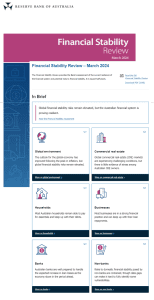Lesson from Europe’s Success in 2017 GOI: Implementing and Sustaining Reforms
As part of the Milken Institute’s mission to improve access to capital, the Global Opportunity Index (GOI) was developed as a statistical tool for assessing the attractiveness of potential investment opportunities in key countries. The GOI gauges these opportunities along five dimensions: Economic Fundamentals, Financial Services, Business Perception, Institutional Framework and International Standards and Policy. Our most recent report focuses on countries in Europe, but the full global ranking of countries can be found at http://globalopportunityindex.org/opportunity.taf?page=rankings.
This year’s report on recent developments in Europe builds on our past research examining capital flows and financial regulation in the region. For some time, Europe has been a driving force in financial globalization and cross-border investment, and the latest GOI shows that 2017 is no exception. The key takeaways from the new 2017 GOI data are:
- Despite many challenges—including the refugee crisis, terrorism, continued high unemployment, and political risks from rising populism—the U.K., Switzerland, Norway, and Sweden rank in the top 10 of the most attractive countries for investment globally, and 15 European countries are in the top 25.
- With a prolonged period of low-interest rates and an improving, albeit slow, economic recovery, key changes in the GOI that boosted the standing of most European countries stemmed from economic and financial reforms.
- The region, especially the countries with preferential access to the European Union’s single market, benefited from a push for regulatory harmonization, which led to major changes in Business Perception—especially for France and Austria—and International Standards and Policy—especially for Switzerland and Spain.
- Financial Services—specifically, access to capital—remain an important driver of European performance relative to the rest of the world.
To sum up, among the key reforms that have contributed to success of the best performing European countries, two trends stand out: the harmonization of rules for the capital markets within the member states and with other major counterparties such as the U.S., and increasing the flexibility of labor markets. These reforms led to significant improvement in business sentiment and compliance with international standards. To a lesser extent, access to funding, helped by the ECB’s accommodative measures, was also a driving force in the European performance. Europe is still facing several challenges such as Brexit negotiations and political gridlocks that could potentially reveal its underlying vulnerabilities in coming years.

